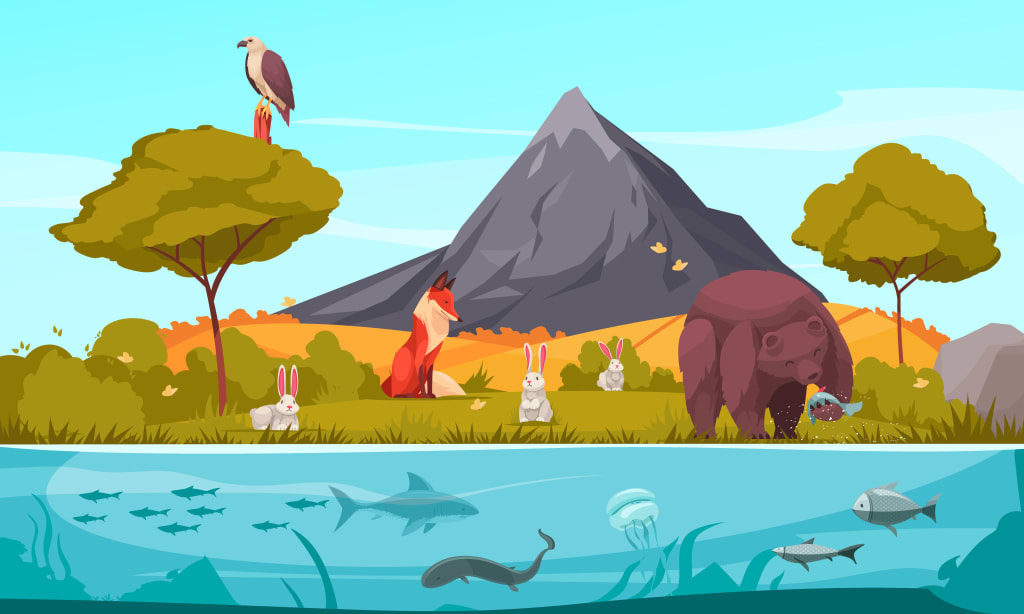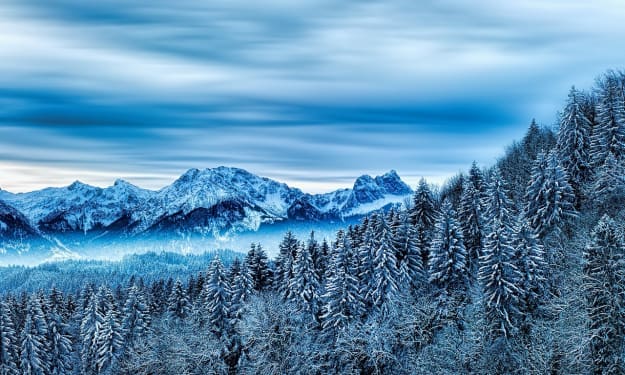
An ecosystem refers to a complex network of living organisms, their physical environment, and the interactions between them. It encompasses all the interconnected elements, such as plants, animals, microorganisms, soil, water, air, and climate, within a specific geographic area or habitat. Ecosystems can be as small as a pond or as large as an entire biome, like a forest or a coral reef.
Key components of an ecosystem include:
Abiotic Factors: These are non-living elements of the ecosystem, including temperature, sunlight, water availability, soil composition, and nutrient levels. Abiotic factors shape the physical characteristics of an ecosystem and influence the distribution and behavior of organisms within it.
Producers: Producers, such as plants and some types of algae, are capable of capturing energy from the sun or other energy sources and converting it into organic matter through photosynthesis. They form the base of the food chain and provide energy and nutrients for other organisms.
Consumers: Consumers are organisms that obtain their energy by consuming other organisms. They can be herbivores (plant eaters), carnivores (meat eaters), or omnivores (consume both plants and animals). Consumers include animals, fungi, and some bacteria.
Decomposers: Decomposers, such as bacteria and fungi, break down dead organic matter and waste materials, returning nutrients to the ecosystem. They play a crucial role in nutrient cycling and recycling within ecosystems.
Food Chain and Food Web: A food chain represents the linear flow of energy and nutrients from one organism to another, as each organism is consumed by another. A food web, on the other hand, is a more complex representation of interconnected food chains within an ecosystem, illustrating the multiple feeding relationships between organisms.
Biodiversity: Biodiversity refers to the variety of different species of plants, animals, and microorganisms within an ecosystem. High biodiversity is essential for maintaining the stability and resilience of ecosystems, as each species contributes to ecosystem functioning and provides valuable ecological services.
Ecological Interactions: Ecosystems are characterized by various interactions between organisms, such as predation, competition, mutualism, and symbiosis. These interactions shape the structure and dynamics of the ecosystem, influencing the abundance and distribution of species.
Ecosystems are dynamic and subject to changes over time. They can be influenced by natural disturbances like fires, floods, and climate variations, as well as human activities such as deforestation, pollution, and habitat destruction. The conservation and sustainable management of ecosystems are crucial for maintaining the balance of nature and the well-being of both the organisms within them and human societies that depend on ecosystem services.
Food Chain:
A food chain represents a linear sequence of organisms in an ecosystem, where each organism is a source of energy for the next organism. It illustrates the transfer of energy and nutrients from one organism to another. Typically, a food chain starts with a primary producer (usually a plant or photosynthetic organism) that converts sunlight into energy through photosynthesis. The primary producer is then consumed by a herbivore (primary consumer), which is subsequently eaten by a carnivore (secondary consumer), and so on. The chain may continue with additional levels of consumers, including tertiary consumers and quaternary consumers.
For example, in a terrestrial food chain, grass (primary producer) is consumed by a grasshopper (primary consumer), which is then eaten by a bird (secondary consumer). In this case, the grass is the source of energy for the grasshopper, and the grasshopper is the source of energy for the bird. The bird may further be consumed by a predator higher in the food chain, such as a snake or a hawk.
Food Web:
A food web is a more realistic representation of feeding relationships in an ecosystem. It is a complex network of interconnected food chains that shows the feeding connections between various organisms within a community. In a food web, organisms can have multiple feeding relationships and may occupy different trophic levels (feeding levels) simultaneously.
In an ecosystem, multiple food chains intertwine to form a food web, capturing the complexity of interactions between different organisms. For instance, a food web in a freshwater ecosystem may include various primary producers (plants, algae), primary consumers (herbivorous fish, insects), secondary consumers (carnivorous fish, frogs), tertiary consumers (larger fish, predatory birds), and decomposers (bacteria, fungi).
The concept of a food web highlights the interdependence of species in an ecosystem. A change in one population can have ripple effects throughout the web, influencing the abundance and distribution of other organisms. It emphasizes that ecosystems are dynamic and interconnected systems, and disruptions or disturbances can have far-reaching consequences on the entire community.
Overall, while a food chain depicts a simplified linear flow of energy and nutrients, a food web provides a more comprehensive and realistic representation of the complex feeding relationships in an ecosystem.
About the Creator
Anaz
Earth Related Topics
Green Earth: Nurturing Our Planet for a Sustainable Future






Comments (2)
Informative!
This was a great read!